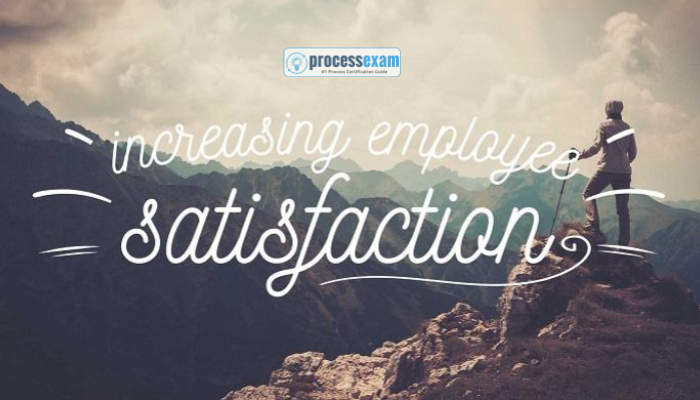According to the Workplace Research Foundation, employees with high engagement levels are 38% more likely to demonstrate above-average productivity at work. Getting and keeping employees engaged is another matter altogether. Businesses and organizations routinely struggle with employee burnout, low productivity rates, and turnover. The results of employee dissatisfaction can be costly. Dale Carnegie reports that employee turnover results in an $11 billion loss annually in the United States.

There’s an upside for workplaces that are able to tap into motivation as engaged employees outperform their disengaged counterparts by up to 202%.
Six Sigma’s Methodology Can Help You do it. Here’s why:
Six Sigma principles and strategies have been used for years, but some business owners are just beginning to see the benefits of using these tools. One of the biggest benefits of Six Sigma is increased productivity. Increasing productivity is one of the best things you can do to strengthen your company, as it leads to lower production costs and higher profits.
Today’s competitive world has made every organization rethink its strategy for long-term survival. It is becoming quintessential to realize the importance of human potential in the long-term success of any organization. A satisfied employee can actually be the differentiating factor in the struggle to gain market share, to deliver customer delight, to innovate product and services and, ultimately, to deliver a better bottom line.
Organizations are using several tools to assess the satisfaction level of employees. The rigor of Six Sigma was used in one such project to assess and implement focused solutions.
Employee satisfaction in the organization was judged annually on the basis of the Q12 questionnaire used by Gallup Worldwide. An analysis by consultants only highlighted the few questions where the satisfaction percentage was lower than the benchmark. Management wanted a more detailed analysis to determine why employees rated low on those questions
Six Sigma Provides Clarity and Focus
People like to know where they’re going, how to get there and what’s expected of them at each stage in the journey. Six Sigma certification acts as a roadmap for employees, highlighting the target goal and underlining the key stops along the way.
But here’s what makes Six Sigma different from other lofty, pie-in-the-sky business goals - it’s measurable, achievable and defined. Telling people they need to produce the customer’s vision of quality is one thing. Explicitly defining that vision and providing a step-by-step process to get there is another matter completely.
To get employees onboard, make sure everyone understands the Six Sigma process, your organization’s reasons for using it and the positive outcomes you plan to achieve.
Increasing Employees Motivation
Motivated employees will naturally be more productive than those who are unmotivated. There are techniques and tools from Six Sigma that are specifically designed to promote employee engagement and create systems of motivation that will work for the employees of your specific company. It’s important to remember that all companies are different and the employee reward systems that work for some companies may not be motivating for the employees of other companies. Six Sigma will individualize a system for your employees. Some companies have increased productivity by as much as 50 percent just by engaging their employees fully.
Implementing new technology such as Six Sigma into your company can be daunting at first, but the benefits it can bring to your company far outweigh the initial learning curve. Using Six Sigma is an excellent way to improve the overall productivity of your company, as well as attract and keep valuable and productive employees.
Six Sigma Certifications:
Conclusion:
Teamwork often seems elusive and downright unattainable. However, organizations that foster a sense of community unite their employees with a shared goal. With Six Sigma, your business goals are no longer pipe dreams. What you want to accomplish will be broken down to a digestible, achievable message. And there are real parameters and targets to make it happen.
As you optimize your processes and eliminate unnecessary tasks, your results will begin to improve. This progress will ignite your employees’ motivations, again and again, leading to continued success.
